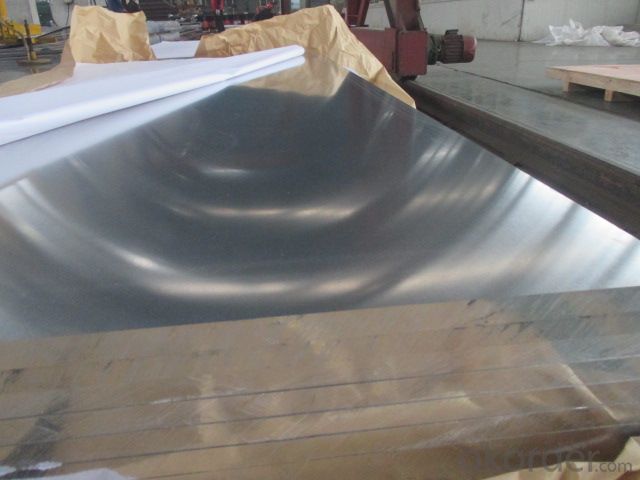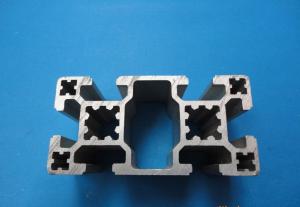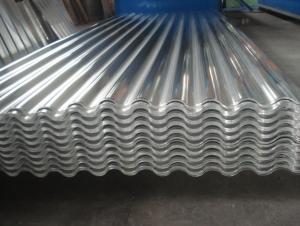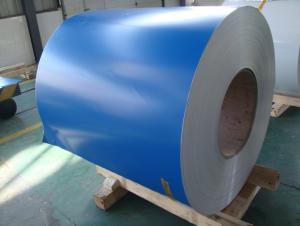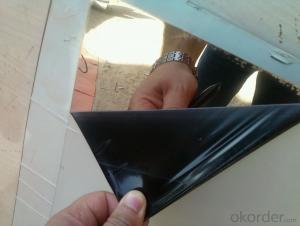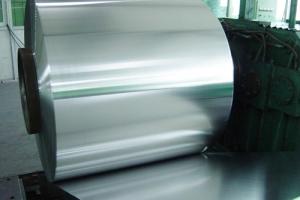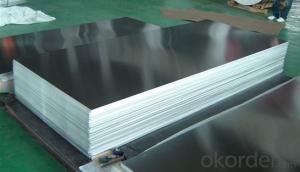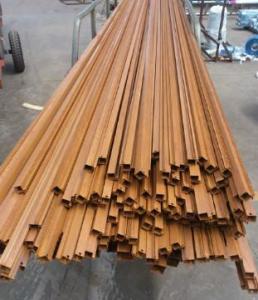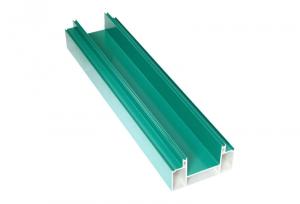Extruded Aluminum Profiles Canada - Aluminium Sheet Cold Rolled Hot Rolled Sheet Plate
- Loading Port:
- Shanghai
- Payment Terms:
- TT or LC
- Min Order Qty:
- 3 m.t.
- Supply Capability:
- 5000 m.t./month
OKorder Service Pledge
OKorder Financial Service
You Might Also Like
1.Structure of Product Description
Cold rolled aluminum sheet AND plate and slab and something else grades are all widely used in the field of construction and other decoration field, etc.
is widely used in the field of construction field and decoration field, etc.
There are many different grades, such as: 3000 series, 7000 series, 8000 sereis,
1000 series, 2000 series, 3000 series, 5052,5754,5083,6061,6063,8011, etc.
The temper is include O,F,H14, H22, H24, H44,H112,H114,etc.
2. Main features of the product
a.Competitive price
b.Frist-Class Service.
c. Shortest service.
3. Image.

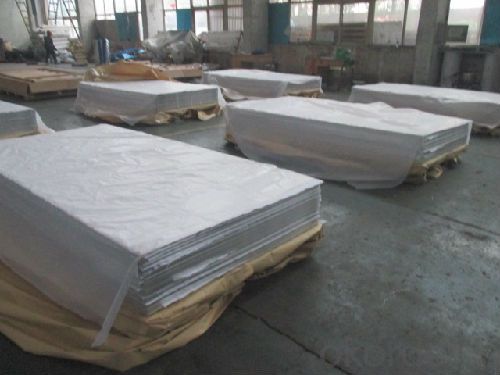
4. Product detailed sizes:
1000mm*2000mm, 1219mm*2438mm,1250mm*2500mm,1000*1000,2000*2000mm,
1500mm*3000mm, etc.
5. FAQ:
What is the quality standard?
---Usually our standard is GB3880-2006 or others.
What is the width range?
---It is from 500mm to 1500mm, etc.
---Normally it is around 9090 tons totally.
Where is your client from?
---Normally it is from Japan, USA, sri lanka, bangladesh, ENGLISH, SINGAPORE, ETC.
What is your mainly products?
---Normally they are aluminum sheet, checkered sheet, mirror finish aluminium sheet, aluminum casting coil, etc.
- Q: Can aluminum profiles be used in marine vessel manufacturing?
- Yes, aluminum profiles can be used in marine vessel manufacturing. Aluminum is a popular choice for constructing boats and other marine vessels due to its unique properties. Aluminum is lightweight, strong, and corrosion-resistant, making it well-suited for marine environments. It can withstand exposure to saltwater, which is a common challenge in marine applications. Additionally, aluminum profiles can be easily formed, welded, and joined together, allowing for efficient and customizable vessel designs. This versatility makes aluminum an attractive option for boat builders and manufacturers.
- Q: How to distinguish the true and false of aluminum profile
- Al Feng brand aluminum precision identification method is to do chemical detection. But in the absence of our conditions, we can only use "observation" to distinguish. What is "observation method", that is, we make a different perspective on the surface of aluminum. Aluminum door and window section is made of aluminum rod by die extrusion and the like, fake phoenix aluminum using bauxite as raw material, so the material contains a lot of impurities, extrusion is easy to mold galling, the surface profile produced is not smooth, there are many marks, and profiles of scrap produced. Can not be reached in a variety of physical effects on strength and hardness.The surface treatment of fake profiles for powder coating (common color: green, white, grey), said simply in this way, the profile above is squeezed out of the powder coverage, this method has great advantage on fake garbage can be squeezed out of aluminum profiles, profiles on the marks effectively cover. But because of fraud for more cost savings, they use inferior adhesion powder, short life, easy to fall off, and covered in the profile of the powder also small and thin, and extruded profile marks are too deep, even if there is a cover up the layer of powder, as long as viewed from different angles and shapes position still, it is easy to see these ugly marks.
- Q: How do aluminum profiles contribute to sustainable packaging solutions?
- Aluminum profiles play a crucial role in promoting sustainable packaging solutions due to their numerous eco-friendly properties. Firstly, aluminum is a highly recyclable material, and its profiles can be easily recycled without losing their inherent qualities. This allows for a closed-loop recycling system, reducing the need for new raw materials and minimizing waste. Additionally, aluminum profiles offer exceptional strength and durability, ensuring that packaging made from these profiles can withstand rigorous handling and transportation. This durability reduces the likelihood of damage or breakage, resulting in less product waste and minimizing the need for additional packaging materials. Moreover, aluminum profiles provide excellent barrier properties, protecting the contents of the packaging from external factors such as moisture, oxygen, light, and temperature variations. This helps to extend the shelf life of the products, reducing food waste and ensuring that goods remain fresh and safe for consumption. Furthermore, aluminum profiles are lightweight, which contributes to energy savings during transportation. The lightweight nature of aluminum packaging allows for reduced fuel consumption and lower carbon emissions, making it an environmentally friendly choice. Lastly, aluminum profiles are resistant to corrosion, ensuring that the packaging remains intact and functional for an extended period. This longevity reduces the need for frequent replacement, saving resources and minimizing the overall environmental impact. In summary, aluminum profiles contribute to sustainable packaging solutions by being recyclable, durable, providing excellent barrier properties, lightweight, and corrosion-resistant. These properties help to minimize waste, reduce energy consumption, extend product shelf life, and lower carbon emissions, making aluminum profiles an ideal choice for eco-conscious packaging solutions.
- Q: What does aluminum 6063 T5 mean?
- 6063 is a kind of 6 alloy, T5 is quenched, air-cooled
- Q: Can aluminum profiles be used in HVAC systems?
- Yes, aluminum profiles can be used in HVAC systems. Aluminum is a lightweight and durable material that is commonly used in various industries, including HVAC. It offers several advantages such as excellent thermal conductivity, corrosion resistance, and easy formability. Aluminum profiles are commonly used in HVAC systems for components such as ductwork, air vents, and heat exchangers. Ductwork made from aluminum profiles is lightweight, easy to install, and resistant to corrosion, making it a popular choice for HVAC installations. Aluminum air vents provide efficient airflow and can be easily adjusted to control the direction and volume of air. Aluminum heat exchangers are also widely used in HVAC systems. The excellent thermal conductivity of aluminum allows for efficient heat transfer, making it ideal for applications where heat exchange is necessary. Additionally, aluminum's corrosion resistance ensures the longevity and reliability of heat exchangers, even in harsh environments. Overall, aluminum profiles are a suitable choice for HVAC systems due to their lightweight nature, durability, thermal conductivity, and corrosion resistance. They contribute to the overall efficiency and performance of HVAC systems while ensuring long-lasting functionality.
- Q: What are the potential environmental effects linked to the utilization of aluminum profiles?
- <p>Yes, there are environmental impacts associated with using aluminum profiles. The production process consumes significant energy, contributing to greenhouse gas emissions. Aluminum production also generates waste, including red mud, which can be harmful if not properly managed. However, aluminum is recyclable, and recycling reduces energy consumption and waste generation. The environmental impact can be mitigated by using recycled aluminum and adopting sustainable production practices.</p>
- Q: Does the profiled bar include aluminum profiles? What are the differences between aluminum and profile?
- In fact, profile and profile now in concept, there is not much difference. Special non conventional means. In fact, the conventional shape shape materials generally have a special name: like bar, sheet, pipe, wire rod, angle, elliptical material and so on. So that the profile is actually refers to the profile.
- Q: What specific coatings or treatments are necessary for aluminum profiles to be used outdoors?
- <p>For outdoor use of aluminum profiles, special coatings or treatments are often required to protect against weathering, corrosion, and UV damage. Anodizing is a common process that increases the durability and resistance of aluminum. Powder coating is another method used for additional protection and to provide a wide range of colors. Some profiles may also be treated with a clear coat to maintain the natural look of aluminum while still offering protection. It's important to select the appropriate treatment based on the specific environmental conditions and aesthetic requirements of the application.</p>
- Q: This question asks about the various methods employed in the production of aluminum profiles, which are long, extruded shapes made from aluminum.
- <p>Aluminum profiles are manufactured using several processes, primarily extrusion, which involves forcing aluminum through a die to create specific shapes. Other processes include casting, where aluminum is poured into molds, and rolling, used to create flat sheets or plates. Machining processes like cutting, drilling, and milling are also used for further shaping and finishing. Additionally, aluminum profiles can be fabricated through bending, which shapes the material into curves or angles, and welding, which joins pieces together. Surface treatments like anodizing, painting, or powder coating are also applied to enhance appearance and durability.</p>
- Q: What materials are used for aluminum profile packing?
- if the surface requirements is not high, three point type packaging is also common, some products need to add pearl carton / wooden packaging. Shanghai aluminum products Co., Ltd.
Send your message to us
Extruded Aluminum Profiles Canada - Aluminium Sheet Cold Rolled Hot Rolled Sheet Plate
- Loading Port:
- Shanghai
- Payment Terms:
- TT or LC
- Min Order Qty:
- 3 m.t.
- Supply Capability:
- 5000 m.t./month
OKorder Service Pledge
OKorder Financial Service
Similar products
Hot products
Hot Searches
Related keywords





